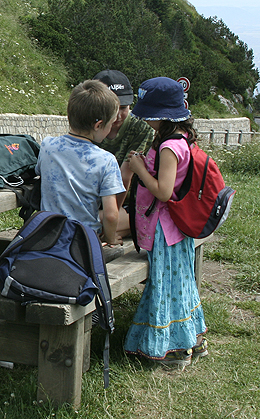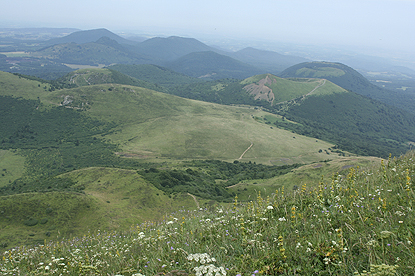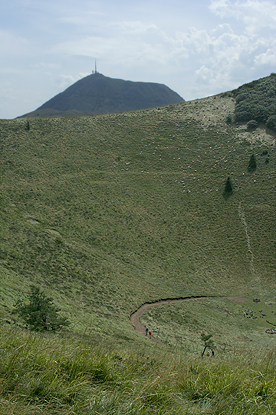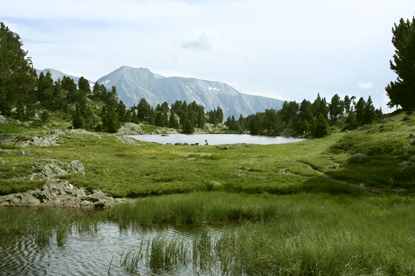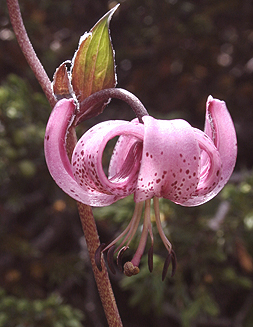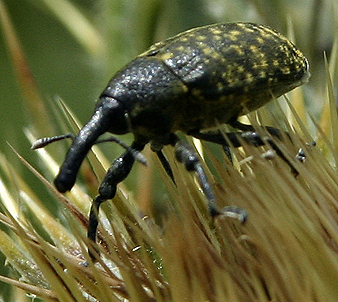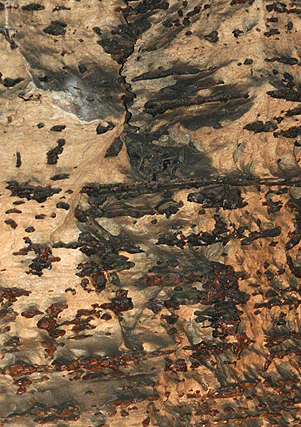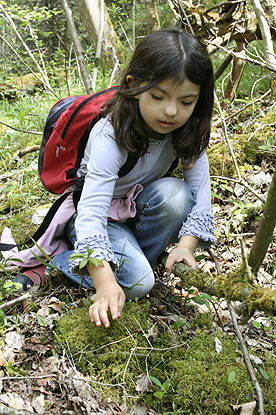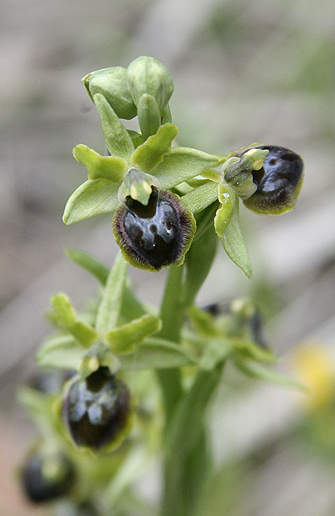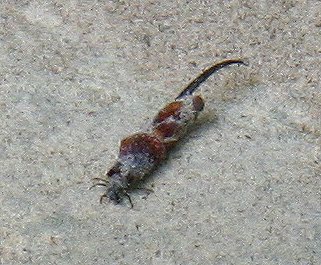Yes, France has its own volcanoes, albeit extinct, and we just got back from a two-night camping trip to the Auvergne to visit some of them. On the first day we met our friends at the volcano theme park for the area, Vulcania. Now the kids liked this! They didn’t even mind queuing for the simulated volcano exploration rides. But I couldn’t help thinking how much nicer it would be if nine tenths of the people were at school when we went. And both Mike and I have seen so many real volcanoes that the reconstructions of geysers and bubbling mud pools didn’t quite cut it for us. Still, I can see the point, for the majority people, and it was quite nicely done.
We really had fun on the next day, hiking up the Puy de Dome, then down and across to a crater called Puy de Parigou, then down to the car park. Then we just drove back to get the other car. The kids walked 12.5 kilometres and weren’t even tired!
Here are our happy hikers. I did not choose my daughter’s hiking outfit! In fact, when I saw it, I packed some trousers in my backpack just in case they were called for:
Where we are going (above). We are heading for the crater of the Puy de Parigou where the path leads, then down the other side to the car park. And where we came from (below). It’s very beautiful countryside and very easy to walk, except the Puy de Dome (the one we came from), which is quite steep:
At 4 o’clock in the morning after this long hike we were awakened by high winds, lightning that appeared uncomfortably close to our tents and showers of rain. We didn’t mind too much, we were heading home anyway. We breakfasted under a rainproof parasol at the campsite cafe, and took our tents down during a brief dry moment. Then we drove for three hours in a torrential downpour, hung our tent up to dry from the beams in the living room, and now we are quite ready to collapse into bed.
